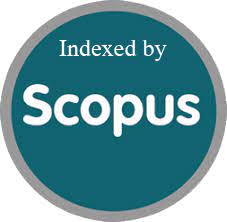Structural Patterns and Narrative Presence: A Quantitative Study of Character Types and Story Arcs in Ama Ata Aidoo’s No Sweetness Here.
DOI:
https://doi.org/10.52783/jns.v14.3582Keywords:
quantitative literary analysis, gendered storytelling, narrative structure, No Sweetness Here, Ama Ata AidooAbstract
This article offers a quantitative structural analysis of Ama Ata Aidoo’s No Sweetness Here, a foundational collection of eleven stories depicting the social, emotional, and political realities of postcolonial Ghana. This study codes narrative variables of interest — the elements of narrative voice, dominant mode, protagonist gender, protagonist class, setting, time span, and ending types — in each of the stories, using Microsoft Excel as the primary analytical tool. The results also reveal that female characters are not only the most frequent — they’re also structurally central; they often function as emotional anchors in stories of loss, silence and resilience. Tragic, ambivalent endings are the most common, especially for stories about rural or working-class women, while redemptive endings are rare and hard-earned. The first-person narration, accompanied by dialogue-heavy passages of prose and compressed stretches of time and space, is an old trick of the trade for Aidoo, a vestige from the oral tradition of African storytelling, that allows for intimate access to her characters’ psychological and cultural conflicts. This study melds literary formalism and empirical content analysis to show that Aidoo’s storytelling choices are deliberate tools of gendered critique and socio-political commentary. This paper contributes to feminist narratology, African literary studies, and the emerging integration of quantitative methods into literary scholarship.
Downloads
Metrics
Downloads
Published
How to Cite
Issue
Section
License

This work is licensed under a Creative Commons Attribution 4.0 International License.
You are free to:
- Share — copy and redistribute the material in any medium or format
- Adapt — remix, transform, and build upon the material for any purpose, even commercially.
Terms:
- Attribution — You must give appropriate credit, provide a link to the license, and indicate if changes were made. You may do so in any reasonable manner, but not in any way that suggests the licensor endorses you or your use.
- No additional restrictions — You may not apply legal terms or technological measures that legally restrict others from doing anything the license permits.










